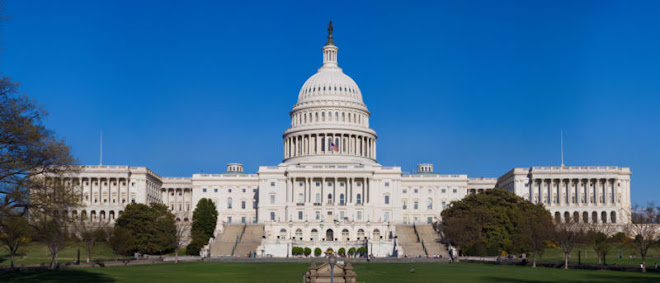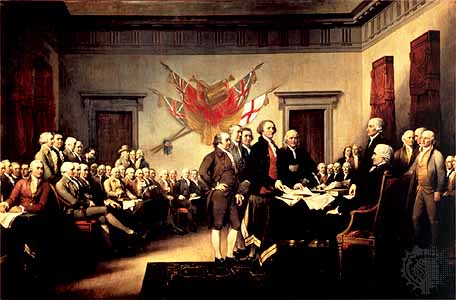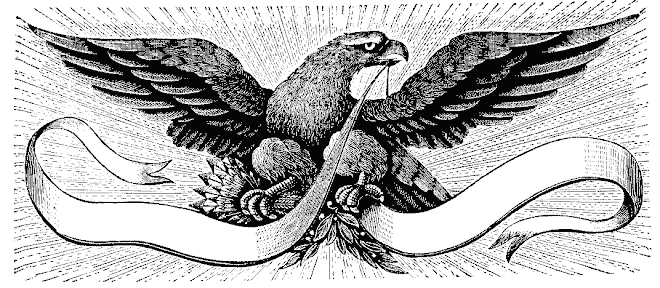From Human Events:
Politics by the Numbers
by Michael Barone
01/31/2011
Numbers can tell a story. Looking back on Barack Obama's second State of the Union message, and looking forward to the congressional session and the 2012 elections, they tell a story that should leave Democrats uneasy.
Start off with the audience in the House chamber. Not all members of Congress attended; Obama briefly and Paul Ryan at greater length in his otherwise brief rebuttal both appropriately noted the absence of Gabrielle Giffords.
But the contrast between the audience at Obama's first State of the Union last year and the audience this year is remarkable. Then there were 316 Democrats and 218 Republicans in Congress. This year there are 289 Republicans and 246 Democrats. No president has seen such a large change in the partisan composition of his State of the Union audience since Harry Truman.
That obviously will have legislative consequences. Obama told Republicans to give up on all but the most minor changes to Obamacare. They're not going to follow this advice.
As for spending, Obama reiterated his call for a limited freeze on domestic discretionary spending and cuts in defense. Again, as Ryan made clear, this Congress has different ideas.
The political incentive for Obama is to sound consensual, not confrontational. The current uptick in his job approval, putting him just over 50 percent, began when he agreed with Republicans to continue current income tax rates rather than raise taxes on high earners.
But on Tuesday night, he continued to call for higher taxes on the greedy rich in a time of sluggish economic recovery. Not as consensual as one might expect.
House Democrats, almost all elected from safe districts, won't mind that. But they're not going to have much to say about legislative outcomes. House Republicans will take it as a poke in the eye and perhaps as an attempt to renege on a deal. Not helpful in reaching other agreements.
In the Senate, where Democrats have a 53-47 majority, but not iron control, the situation is different. In the 2012 cycle, 23 Democrats come up for re-election and only 10 Republicans. You can get a good idea of their political incentives by looking at the 2010 popular vote for the House in their states. Since the mid-1990s, when partisan percentages in presidential and House elections converged, the popular vote for the House has been a pretty good gauge of partisan balance.
Of the 10 Republican senators up for re-election, only two represent states where Democrats won the House vote -- Olympia Snowe of Maine and Scott Brown of Massachusetts. They're both well ahead in local polls.
For the 23 Democrats up for re-election, the picture is different. Eight represent states where the House vote was 53 percent to 65 percent Democratic and where Barack Obama got more than 60 percent in 2008. Count them all as safe.
But 12 represent states where Republicans got a majority of the House vote in 2010. These include big states like Florida, Pennsylvania, Ohio, Michigan and Virginia, and states like Montana and Nebraska, where Republican House candidates topped 60 percent. Missouri, New Jersey, North Dakota, West Virginia and Wisconsin round out the list.
In another three states -- New Mexico, Washington, Minnesota -- Republicans won between 46 percent and 48 percent of the House popular vote. These were solid Obama states in 2008. They don't look like solid Democratic states now.
The point is that Democratic senators from all or most of these 15 states have a political incentive to reach agreements with Republicans that go a lot further than Obama did at the State of the Union.
Finally, what about the portents for the 2012 presidential race? Well, start off with the fact that Democrats won the House popular vote in only two of the 17 states that do not have Senate elections next cycle. The other 15 went Republican.
Overall, Democrats carried the popular vote for the House in 15 states with 182 electoral votes in 2012; add three more for the District of Columbia. Democrats were within 5 percent of Republicans in House elections in five more states with 52 electoral votes.
That gets Democrats up to 237 electoral votes, 33 votes shy of the 270-vote majority and 128 short of the 365 electoral votes Obama won in 2008.
--------------------------------------------------------------------------------
Mr. Barone is a resident fellow at the American Enterprise Institute, a Fox News Channel contributor and the principal co-author of The Almanac of American Politics, published by National Journal every two years.
Politics by the Numbers
by Michael Barone
01/31/2011
Numbers can tell a story. Looking back on Barack Obama's second State of the Union message, and looking forward to the congressional session and the 2012 elections, they tell a story that should leave Democrats uneasy.
Start off with the audience in the House chamber. Not all members of Congress attended; Obama briefly and Paul Ryan at greater length in his otherwise brief rebuttal both appropriately noted the absence of Gabrielle Giffords.
But the contrast between the audience at Obama's first State of the Union last year and the audience this year is remarkable. Then there were 316 Democrats and 218 Republicans in Congress. This year there are 289 Republicans and 246 Democrats. No president has seen such a large change in the partisan composition of his State of the Union audience since Harry Truman.
That obviously will have legislative consequences. Obama told Republicans to give up on all but the most minor changes to Obamacare. They're not going to follow this advice.
As for spending, Obama reiterated his call for a limited freeze on domestic discretionary spending and cuts in defense. Again, as Ryan made clear, this Congress has different ideas.
The political incentive for Obama is to sound consensual, not confrontational. The current uptick in his job approval, putting him just over 50 percent, began when he agreed with Republicans to continue current income tax rates rather than raise taxes on high earners.
But on Tuesday night, he continued to call for higher taxes on the greedy rich in a time of sluggish economic recovery. Not as consensual as one might expect.
House Democrats, almost all elected from safe districts, won't mind that. But they're not going to have much to say about legislative outcomes. House Republicans will take it as a poke in the eye and perhaps as an attempt to renege on a deal. Not helpful in reaching other agreements.
In the Senate, where Democrats have a 53-47 majority, but not iron control, the situation is different. In the 2012 cycle, 23 Democrats come up for re-election and only 10 Republicans. You can get a good idea of their political incentives by looking at the 2010 popular vote for the House in their states. Since the mid-1990s, when partisan percentages in presidential and House elections converged, the popular vote for the House has been a pretty good gauge of partisan balance.
Of the 10 Republican senators up for re-election, only two represent states where Democrats won the House vote -- Olympia Snowe of Maine and Scott Brown of Massachusetts. They're both well ahead in local polls.
For the 23 Democrats up for re-election, the picture is different. Eight represent states where the House vote was 53 percent to 65 percent Democratic and where Barack Obama got more than 60 percent in 2008. Count them all as safe.
But 12 represent states where Republicans got a majority of the House vote in 2010. These include big states like Florida, Pennsylvania, Ohio, Michigan and Virginia, and states like Montana and Nebraska, where Republican House candidates topped 60 percent. Missouri, New Jersey, North Dakota, West Virginia and Wisconsin round out the list.
In another three states -- New Mexico, Washington, Minnesota -- Republicans won between 46 percent and 48 percent of the House popular vote. These were solid Obama states in 2008. They don't look like solid Democratic states now.
The point is that Democratic senators from all or most of these 15 states have a political incentive to reach agreements with Republicans that go a lot further than Obama did at the State of the Union.
Finally, what about the portents for the 2012 presidential race? Well, start off with the fact that Democrats won the House popular vote in only two of the 17 states that do not have Senate elections next cycle. The other 15 went Republican.
Overall, Democrats carried the popular vote for the House in 15 states with 182 electoral votes in 2012; add three more for the District of Columbia. Democrats were within 5 percent of Republicans in House elections in five more states with 52 electoral votes.
That gets Democrats up to 237 electoral votes, 33 votes shy of the 270-vote majority and 128 short of the 365 electoral votes Obama won in 2008.
--------------------------------------------------------------------------------
Mr. Barone is a resident fellow at the American Enterprise Institute, a Fox News Channel contributor and the principal co-author of The Almanac of American Politics, published by National Journal every two years.










No comments:
Post a Comment